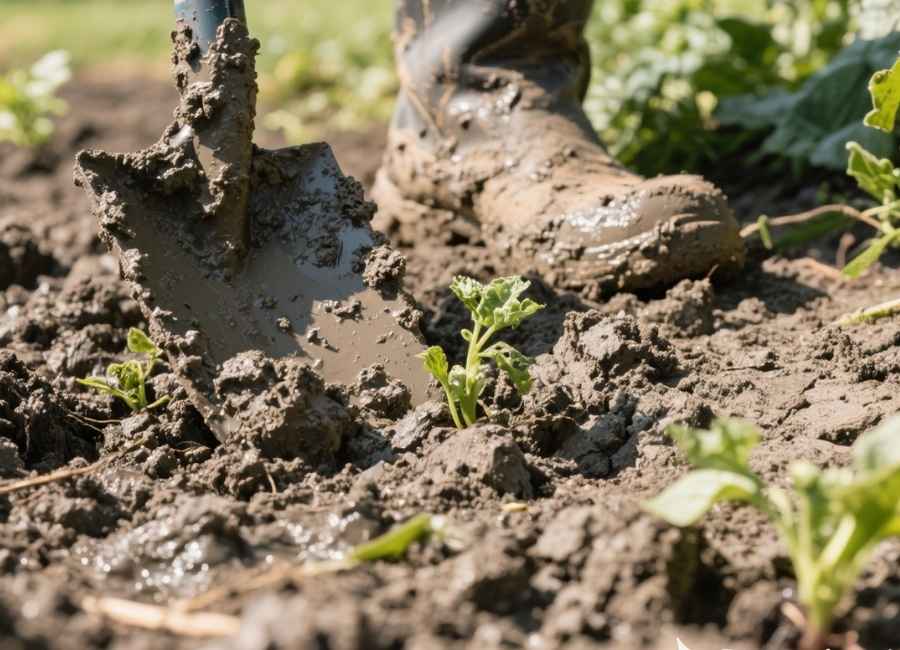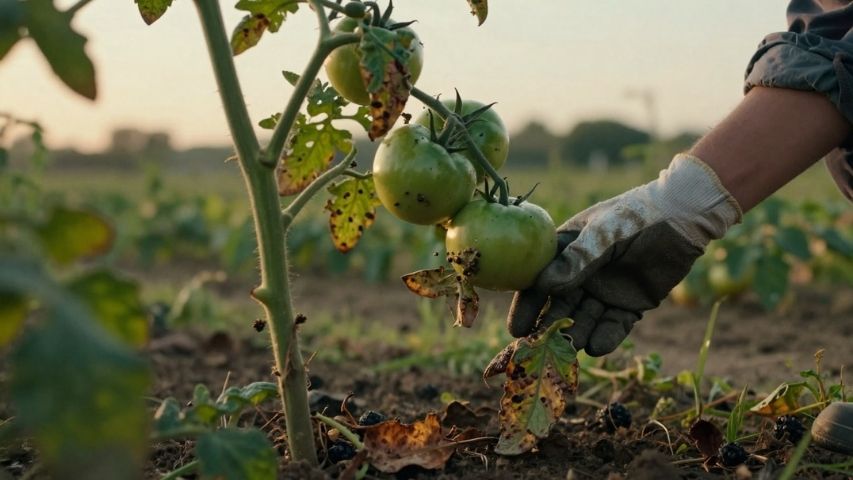Gardening in heavy clay soil can be challenging. The sticky soil clings to your boots and tools, turning digging into hard work. It’s easy to get frustrated when your plants struggle to grow in these conditions.
But clay soil does have its benefits. It’s full of nutrients and holds water better than sandy soil. With some effort and the right materials, you can turn heavy clay into a fertile base for a healthy garden.
This guide will show you how to improve your clay soil. You’ll learn which organic materials work best, how to mix them in, and how to help your plants without harming them. Soon, your tough soil can become a great place for plants to grow.
Why Clay Soil Is Challenging for Plants
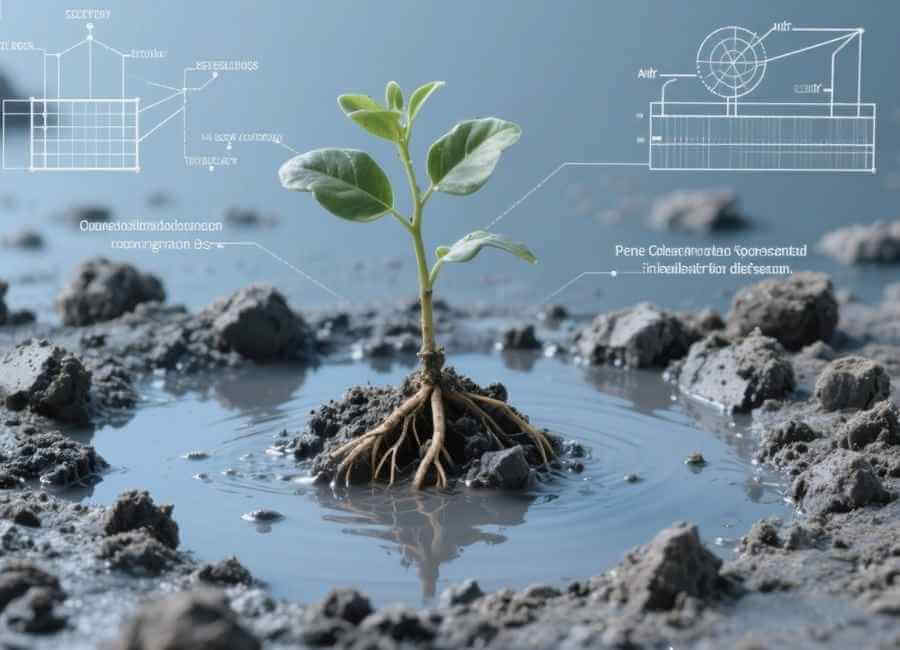
Clay soil is made up of tiny particles that stick together, so there isn’t much space for air or water to move. This tightness causes a few problems for plants:
- Poor Drainage: Water tends to sit on the surface or drain very slowly, leading to waterlogged roots. This can suffocate plants and cause root rot.
- Lack of Aeration: Plant roots need oxygen to survive. The dense structure of clay soil limits air circulation, which can stunt plant growth.
- Difficulty in their ability to absorb nutrients and water.
Even with these problems, clay’s fine particles are great at holding essential nutrients for plants. If you improve the soil’s structure, you can make the most of what clay has to offer.
How to Amend Clay Soil: A Step-by-Step Guide
Improving clay soil is a marathon, not a sprint. It requires patience and consistent effort, but the results are well worth it. The key is to add organic matter, which breaks up the dense particles and improves the structure.
1. Choose the Right Organic Amendments
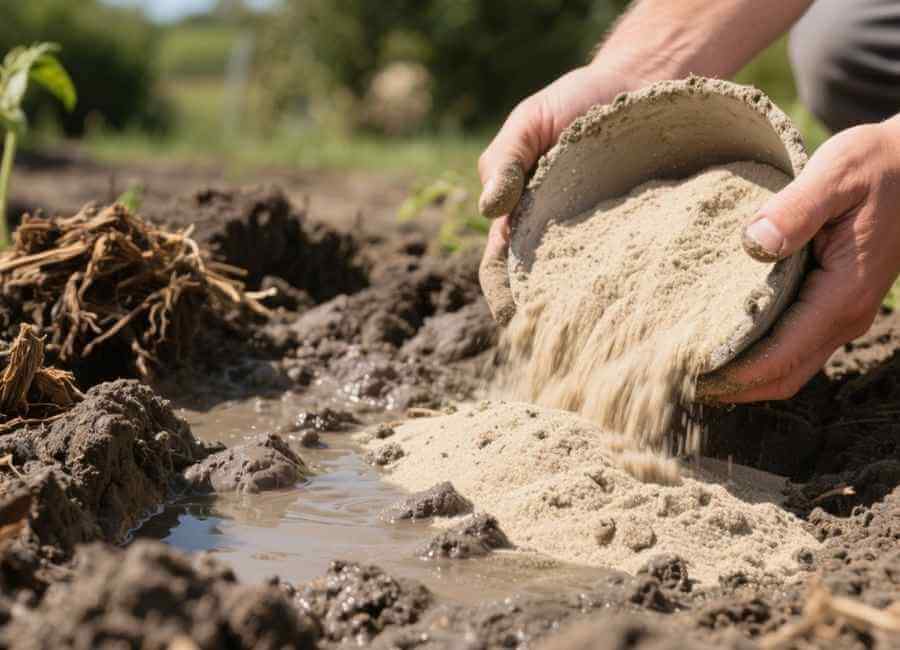
Adding sand to clay soil might seem like a logical way to loosen it, but it is a common mistake. Mixing sand with clay can create a substance similar to concrete, worsening your problem. (Does adding sand to clay soil help?, 2025)
Instead, add organic matter to your soil. This helps water drain, adds nutrients, and creates air spaces for roots. Some of the best materials are:
- Compost: The gold standard for soil improvement. It’s packed with nutrients and beneficial microbes. (Miller & Mann, n.d.)
- Leaf Mould: Decomposed leaves create a light, crumbly material that dramatically improves soil structure. (Richardville et al., 2022)
- Well-Rotted Manure: This is a good source of nitrogen and other nutrients that help your soil.
When starting a new garden bed, it’s a good idea to test the soil first. This will tell you whether your soil is lacking specific nutrients, such as phosphorus, or whether you need to adjust the pH with lime.
2. Prepare and Mix the Soil

Before you add anything, could you possibly loosen the soil? You can only do this when the soil is dry. If you work with wet clay, it can get even more compacted and lose its structure.
- For large areas: Use a tiller to break up the top layer of soil.
- For smaller beds: A sturdy spade or garden fork will work just fine.
After loosening the soil, add a 2-inch layer of compost on top. Mix it in well with your tiller or spade. Do this two more times, so you add about six inches of compost in total. It may seem like a lot, but it really helps heavy clay. (Soil Amendments, 2025)
3. Work Around Existing Plants
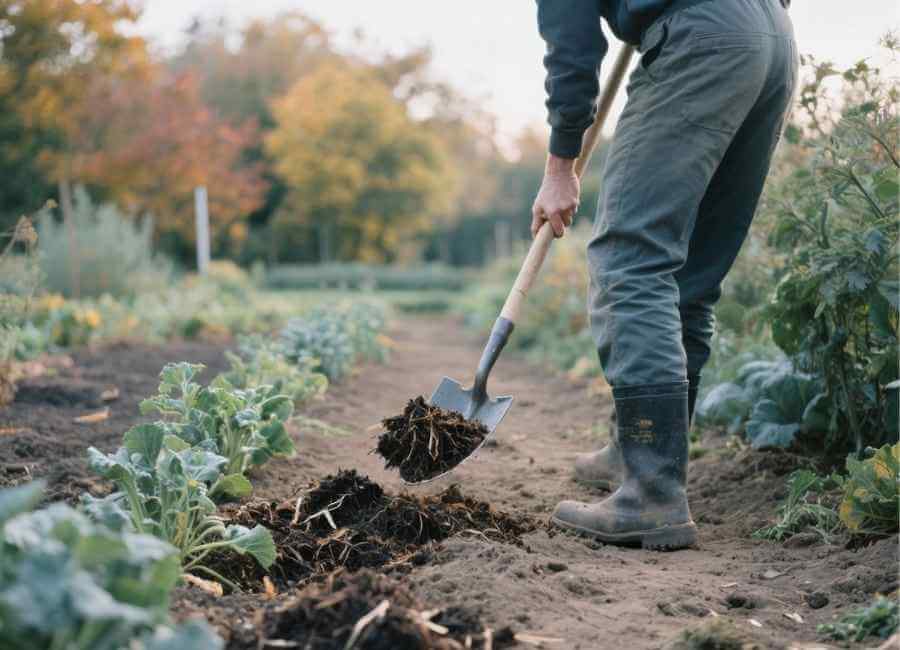
If you’re improving soil in an existing garden, be extra careful. The best time to do this is in the fall, when it’s cooler and the soil is usually drier.
Apply a few inches of compost on the soil surface between your plants. Use a narrow spade or hand trowel to gently work the compost into the top few inches of soil. Be careful not to disturb your plants’ roots. As you work, move backwards to avoid stepping on and re-compacting the soil you’ve just turned.
If you repeat this process every year, your soil will slowly become healthier and more conducive to plant growth.
Long-Term Strategies for Healthy Soil
Improving your soil takes ongoing care. Here are some ways to keep your soil healthy and fertile for years.
Mulch with Organic Materials

In nature, fallen leaves and other organic debris decompose on the forest floor, constantly enriching the soil from the top down. You can mimic this natural process by mulching your garden beds with organic materials. Shredded leaves, wood chips, pine needles, or grass clippings are all great options.
A 2 to 3-inch layer of mulch keeps moisture in, stops weeds, and slowly adds organic matter as it breaks down. (Mulch, 2023) Don’t worry about the myth that oak leaves or pine needles make soil too acidic—they don’t. (Leaves/Needles – Don’t Acidify Soil, 2012)
Plant a Cover Crop
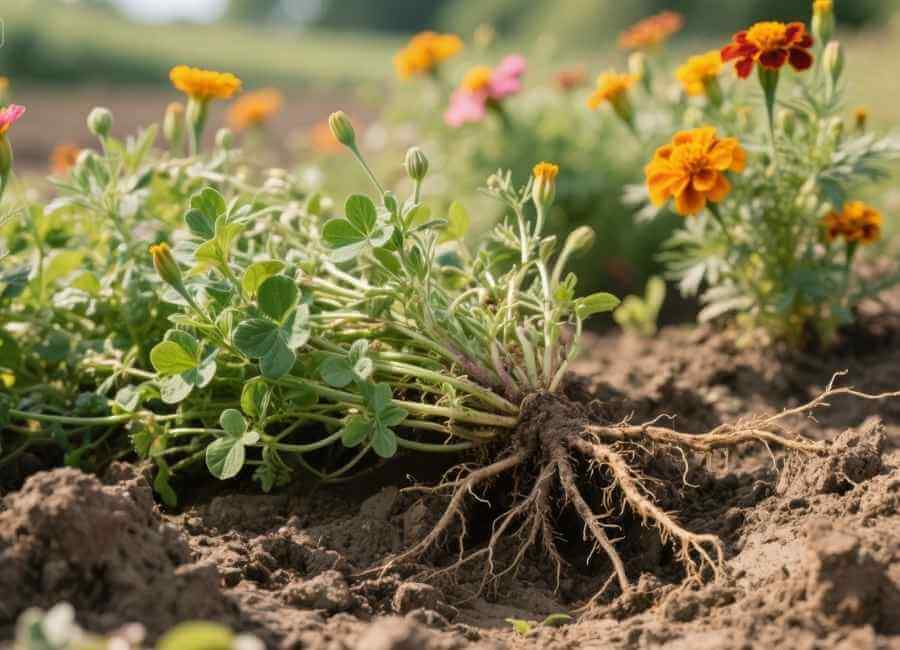
Cover crops, also called “green manure,” are another great way to help clay soil. Plants like clover, vetch, or winter rye have deep roots that break up compacted soil. (Gentsch et al., 2024, pp. 139-150)
At the end of the season, cut the cover crops at soil level and leave the roots in the ground to break down. This adds organic matter and makes spaces for air and water to move through the soil. (Soil Health, n.d.) Even annual flowers like marigolds and zinnias can help in this way.
Choose Clay-Tolerant Plants

As you improve your soil, it’s smart to pick plants that already do well in clay. Choosing plants that fit your soil makes gardening easier and your garden healthier.
Many lovely perennials, shrubs, and trees grow well in heavy clay. Try Black-Eyed Susans, Coneflowers, Hostas, and Daylilies. These tough plants will do well as your soil gets better. (Plants That Can Tolerate Clay Soil, 2024)
Frequently Asked Questions
How often should I add compost to my clay soil?
For new garden beds, you should add a significant amount of compost upfront. For established beds, adding a few inches of compost as a top dressing each spring or fall is a great way to continue improving the soil.
Can I just put topsoil over clay?
Just putting topsoil over clay doesn’t work well in the long run. The topsoil will compact, and a hard layer can form between the two soils, preventing roots from growing deeper. It’s better to mix organic matter right into the clay to help its structure.
How long does it take to improve clay soil?
You might see some improvement in the first year, but really changing heavy clay soil takes time. If you add organic matter every year, you’ll see much better soil and healthier plants in 3 to 5 years. (Soil Organic Matter in Cropping Systems, n.d.)
Your Path to a Healthier Garden
Working with clay soil requires dedication, but the reward is a rich, nutrient-dense garden that can support a wide variety of healthy plants. By consistently adding organic matter, mulching, and choosing the right plants, you can turn your challenging soil into a gardener’s dream.
You can begin by checking your soil, selecting appropriate amendments, and building a stronger foundation for your garden. With patience and care, you’ll create a thriving garden that brings you joy for years.







